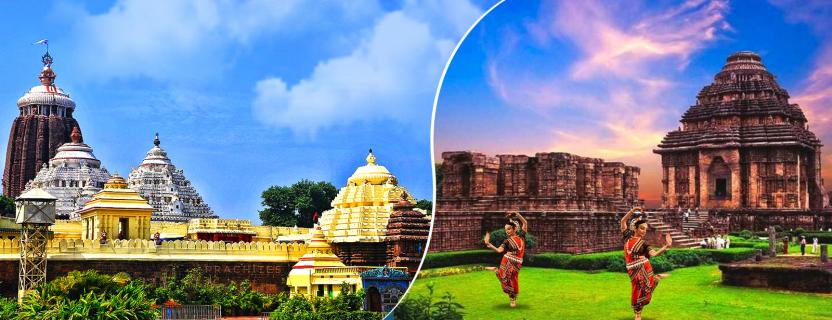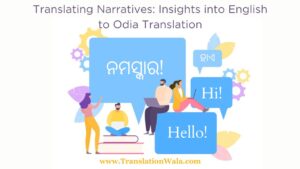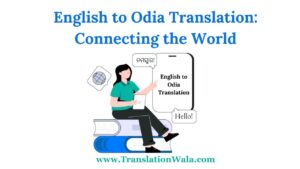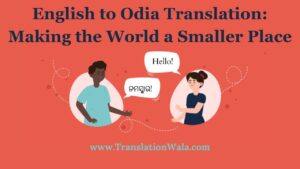We are able to communicate with one another, gain knowledge, and have a better understanding of the norms and principles that underpin a society thanks to this medium. India’s Odisha state has a legacy that is both rich and diversified in terms of cultural traditions.
Odisha, which is located on the eastern coast, has a rich cultural heritage and a long and illustrious history. A English to Odia Translation is one of the most important tools you’ll need if you want to learn more about this interesting state.
In this blog, we will discuss the significance of translation into Odia, the difficulties that it entails, and the ways in which it may reveal the splendor of Odia culture to the rest of the world.
Understanding the Significance of Odia Translation:
- Safeguarding Heritage: Odia is considered to be one of India’s ancient languages, and it has a history that spans more than two thousand years. It has a long and illustrious literary legacy that includes ancient writings, poetry, and sacred scriptures. The process of translation is very important in the conservation of these priceless works because it ensures that the knowledge and experience of bygone eras will be available to subsequent generations.
- Bridging Cultural Divides: Language difficulties may be important obstacles in the process of building cross-cultural understanding and should be overcome wherever possible. By translating material originally written in English into Odia, we may close these knowledge gaps, making information, ideas, and tales available to speakers of Odia. This opens the door to a more profound understanding of the world’s many cultures.
- Empowering Odia Speakers: Access to information in one’s own language may be empowering for speakers of any language, including Odia. By making material that is instructional, technical, and informative available in Odia, we make it possible for people who speak Odia to easily have access to information, which in turn fosters regional expansion and improvement.
Also Read: English to Malayalam Translation – Breaking Language Barriers
Challenges in English to Odia Translation:
- Linguistic Complexity: Complexity of the Language Odia is a highly sophisticated language that use its own alphabet and has a distinctive grammatical structure. The many grammatical nuances and complex sentence structure of the original language make it difficult to render in another language.
- Contextual Adaptation: Adaptation to Context The process of translating English phrases or idioms into Odia while maintaining their original meaning may be a complex and challenging task. Translators have a responsibility to ensure that the information they produce is accurate representations of the original and that it continues to be relevant within the context of Odia.
- Technical Vocabulary: There is a possibility that some scientific and technical terminology might not have exact counterparts in the Odia language. The translators have to come up with suitable language alternatives that are able to represent the desired ideas in an authentic manner.
- Cultural Nuances: The manner in which one expresses one’s feelings, one’s respect for others, and one’s civility might vary greatly from culture to culture. For the purpose of ensuring that the information that has been translated is culturally sensitive, translators need to keep these subtleties in mind.
Unlocking the Beauty of Odia Culture:

- Literature and Folklore: The folklore of Odia is a rich source of art, culture, and spirituality, and so is the literature of Odia. Classic works of Odia literature, such as novels, poems, and folktales, are being translated into English so that readers all over the globe may experience the vivid imagination and originality of Odia writers.
- Odissi Dance and Music: Dance & Music of the Odissi Style Odissi, which is considered to be one of the eight traditional dances of India, is a fascinating art form that tells tales via the beautiful movements of the dancers. By translating melodies and dance compositions from Odissi, an audience from all over the world will be able to appreciate the elegance and complexity of this classic dance style.
- Cuisine and Culinary Traditions: Traditions in the Kitchen The cuisine of Odia is a delicious fusion of a variety of tastes and the methods used in the kitchen. The process of translating traditional Odia recipes into English offers up the possibility of people all over the globe enjoying and appreciating original Odia foods.
- Art and Handicrafts: The state of Odisha is well known for the intricacy of its handicrafts and the artwork that it produces. We are able to contribute to the preservation of these art forms and increase respect for them by translating text that is linked to the methods that the craftsmen use and the tales that are behind their works.
Final Words:
English to Odia Translation process of translation acts as a bridge, linking the rest of the globe to the fascinating world of Odia culture. We will be able to maintain legacy, disseminate information, and appreciate the splendor of our culturally diverse state thanks to the hard work of talented translators.
By embracing translation as a method of cultural interchange, we are able to develop unity in the midst of variety and create a society in which every culture is respected and treasured.
Let us, through the alchemy of translation, discover the beauties that the Odia culture has to offer as well as the splendor that resides inside the language and customs of that civilization.



